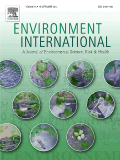
ENVIRONMENT INTERNATIONAL
Scope & Guideline
Leading the Way in Open Access Environmental Research
Introduction
Aims and Scopes
- Environmental Toxicology and Health Risk Assessment:
Research investigating the toxicological effects of environmental pollutants, including heavy metals, pesticides, and endocrine disruptors, on human health, particularly focusing on mechanisms of action, exposure pathways, and health outcomes. - Epidemiological Studies of Environmental Exposures:
Epidemiological research exploring the associations between exposure to environmental pollutants (like air pollution, heavy metals, and chemicals) and adverse health effects, including cardiovascular diseases, respiratory conditions, and neurological disorders. - Sustainable Environmental Practices and Policies:
Studies that evaluate the effectiveness of environmental policies, interventions, and practices aimed at reducing pollution and promoting sustainability, including assessments of health impacts related to air quality improvement initiatives. - Emerging Contaminants and Microplastics:
Research addressing the occurrence, fate, and effects of emerging contaminants such as per- and polyfluoroalkyl substances (PFAS) and microplastics, with a focus on their environmental persistence and implications for human health. - Climate Change and Health:
Investigations into the impacts of climate change on health outcomes, including studies linking extreme weather events, temperature fluctuations, and air quality to public health issues. - Public Health Implications of Environmental Exposures:
Research that connects environmental exposures to public health outcomes, emphasizing the need for effective communication and policy measures to mitigate health risks associated with environmental factors. - Use of Advanced Analytical Techniques:
Utilization of innovative methodologies such as multi-omics approaches, machine learning, and advanced statistical modeling to analyze complex data related to environmental exposures and health outcomes.
Trending and Emerging
- Impact of Climate Change on Health:
There is an increasing focus on the health implications of climate change, particularly studies examining how extreme weather events, temperature fluctuations, and air quality variations affect public health outcomes. - Microplastics and Environmental Health:
Research on microplastics and their implications for human health is rapidly emerging, with studies exploring their sources, exposure pathways, and toxicological effects becoming more prominent. - Cumulative and Mixture Exposure Assessments:
A growing trend towards understanding the health effects of cumulative exposures and chemical mixtures, reflecting the complex realities of environmental exposure scenarios faced by populations. - Health Disparities Linked to Environmental Exposures:
Research addressing health disparities related to environmental exposures is gaining attention, focusing on how socioeconomic status, race, and geography influence vulnerability to pollution. - Use of Advanced Technologies in Exposure Assessment:
Emerging methodologies such as machine learning, multi-omics approaches, and innovative biomonitoring techniques are increasingly utilized to enhance the understanding of exposure and health relationships. - Public Health Responses to Environmental Risks:
Studies evaluating the effectiveness of public health interventions and policies aimed at mitigating environmental risks are becoming more frequent, emphasizing the need for evidence-based decision-making. - Focus on Emerging Contaminants:
There is a notable shift towards investigating emerging contaminants, particularly PFAS and other novel pollutants, reflecting heightened awareness of their environmental persistence and potential health impacts.
Declining or Waning
- Traditional Chemical Exposure Studies:
Research focusing solely on traditional chemical exposures without considering the complex interactions of mixtures or the role of emerging contaminants appears to be less prevalent, as the field moves towards understanding the cumulative effects of multiple exposures. - Basic Environmental Science without Direct Health Implications:
Studies that explore environmental science aspects without a clear link to human health outcomes are becoming less common, as the journal emphasizes research that directly informs public health and policy. - Non-Quantitative Risk Assessments:
There seems to be a waning interest in non-quantitative assessments of environmental risks, with a shift towards more rigorous quantitative approaches that employ advanced modeling and statistical techniques. - Focus on Historical Contaminants:
Research dedicated to historical contaminants (e.g., legacy pollutants) without addressing current and emerging threats may be declining, as contemporary issues like microplastics and PFAS gain more attention.
Similar Journals

Journal of Hazardous Materials Advances
Championing accessibility in hazardous materials scholarship.The Journal of Hazardous Materials Advances, published by ELSEVIER, is a premier open-access journal dedicated to advancing the understanding and management of hazardous materials. Established in 2021, this journal has quickly gained recognition, securing a place in the prestigious Q1 quartile across multiple categories, including Environmental Chemistry, Environmental Engineering, Health, Toxicology and Mutagenesis, Pollution, and Waste Management and Disposal. With its impactful research indexed under ISSN 2772-4166, the journal not only prioritizes quality but also promotes accessibility to its scholarly outputs, ensuring that vital findings are readily available to the global research community. As part of Scopus, the Journal ranks competitively in various subfields of Environmental Science, reflecting its vital role in addressing contemporary environmental challenges. Researchers, professionals, and students can rely on this journal to provide innovative insights and solutions in the ever-evolving landscape of hazardous material management and its implications for public health and environmental sustainability.
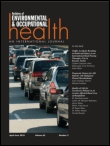
Archives of Environmental & Occupational Health
Pioneering research at the intersection of health and environment.Archives of Environmental & Occupational Health is a prestigious journal published by Routledge Journals, Taylor & Francis Ltd, dedicated to advancing research and knowledge in the realms of environmental science, occupational health, and toxicology. With an ISSN of 1933-8244 and an E-ISSN of 2154-4700, this peer-reviewed journal has gained significant recognition, currently holding a Q2 ranking in Environmental Science and Q3 rankings in Health, Toxicology and Mutagenesis, and Public Health. Established in 2005, it serves as a vital platform for researchers, practitioners, and policymakers alike who aim to address and disseminate findings on pressing environmental and occupational health issues. The journal is not open access, allowing for rigorous peer review processes while still reaching a broad readership. As it converges through 2024, the Archives of Environmental & Occupational Health continues to play a critical role in shaping discourse and fostering innovation in the field, making it an essential resource for those committed to improving both human health and the environment.
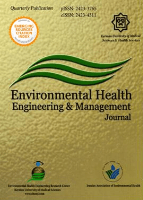
Environmental Health Engineering and Management Journal
Bridging the Gap Between Ecology and Human Well-beingEnvironmental Health Engineering and Management Journal is a premier platform dedicated to the dissemination of research findings in the essential field of environmental health. Published by Kerman University of Medical Sciences in Iran, this Open Access journal has been a beacon of scientific inquiry since its inception in 2014. With an ISSN of 2423-3765 and E-ISSN 2423-4311, it facilitates broad accessibility to cutting-edge research that addresses the complex interactions between environmental factors and human health. With a notable categorization in the Q3 quartile for Environmental Science and Public Health, alongside Q4 in Chemical Health and Safety, the journal underscores its commitment to quality and relevance. Currently ranked #132 out of 233 in Environmental Science within Scopus, it serves as a crucial resource for researchers and practitioners striving to tackle contemporary environmental challenges. The journal's scope includes innovative methodologies, environmental risk assessment, and sustainable health practices, positioning it as an indispensable reference for those invested in improving public health outcomes through environmental engineering and management.
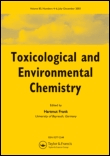
TOXICOLOGICAL AND ENVIRONMENTAL CHEMISTRY
Innovating solutions for a sustainable and healthy future.TOXICOLOGICAL AND ENVIRONMENTAL CHEMISTRY is a pivotal journal published by Taylor & Francis Ltd, addressing critical intersections between environmental chemistry and toxicology since its inception in 1979. With its ISSN 0277-2248 and E-ISSN 1029-0486, the journal serves as a platform for rigorous research and innovative methodologies in pollution control, health implications of environmental chemicals, and the broader spectrum of toxicological studies. Although it currently does not offer open access, the journal's impact in the field is underscored by its Category Quartiles rankings in 2023, placing it in Q3 across Environmental Chemistry, Health, Toxicology and Mutagenesis, and Pollution categories. Furthermore, its Scopus rankings reveal its significant role within the scientific community, specifically in areas such as Environmental Science and Toxicology. The journal aspires to foster multidisciplinary dialogue and advance knowledge that contributes to environmental sustainability and public health, making it an essential resource for researchers, professionals, and students dedicated to these fields.
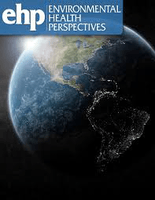
ENVIRONMENTAL HEALTH PERSPECTIVES
Innovating solutions through rigorous environmental health research.Environmental Health Perspectives (EHP) is a premier open-access journal published by the U.S. Department of Health and Human Services, Public Health Science, dedicated to publishing rigorous and impactful research in the field of environmental health. Since its inception in 1972, EHP has become a leading platform for disseminating knowledge on the interactions between the environment and human health, making significant contributions to the fields of toxicology and public health. With an impressive impact factor and a Q1 ranking in both Health, Toxicology and Mutagenesis and Public Health, Environmental and Occupational Health categories, EHP ranks among the top journals globally, reflecting its high citation and visibility within the academic community. Researchers, professionals, and students alike will find a wealth of vital information within its pages, as EHP covers a wide array of topics related to environmental exposures, health outcomes, and policy implications. Furthermore, EHP engages with a global audience through its commitment to open access, ensuring that critical research is available to all, enhancing the collective understanding of environmental health issues since 1972.
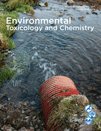
ENVIRONMENTAL TOXICOLOGY AND CHEMISTRY
Pioneering research for a safer, cleaner environment.ENVIRONMENTAL TOXICOLOGY AND CHEMISTRY is a premier journal published by Wiley that has established itself as an essential resource for researchers, professionals, and students in the fields of environmental chemistry and toxicology. With a robust trajectory since its inception in 1982, the journal offers critical insights into the interactions between environmental pollutants and biological systems, aiming to advance our understanding of the impacts of toxins on health and ecosystems. Recognized in the top quartile (Q1) of both Environmental Chemistry and Health, Toxicology, and Mutagenesis categories as of 2023, the journal is respected for its rigorous peer-reviewed content and high impact factor. It ranks 33rd out of 148 in Health, Toxicology and Mutagenesis and 48th out of 147 in Environmental Chemistry according to Scopus metrics, placing it firmly within the most influential publications in these fields. Although it does not currently offer open access, the journal remains a vital conduit for disseminating cutting-edge research and innovative methodologies that address pressing environmental challenges.
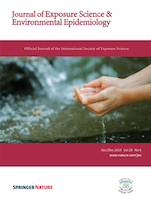
Journal of Exposure Science and Environmental Epidemiology
Advancing the Science of Health and EnvironmentJournal of Exposure Science and Environmental Epidemiology, published by SPRINGERNATURE in the United Kingdom, is a leading platform for researchers and practitioners dedicated to understanding the interplay between environmental factors and human health. With an impressive impact factor and Q1 and Q2 rankings across multiple categories such as Pollution and Public Health, the journal has established itself as a critical resource in the fields of epidemiology, toxicology, and environmental science. Covering a wide spectrum of studies from 2006 to 2024, it aims to disseminate timely research that empowers professionals and informs policy decisions. Although there is no open access option at this time, the journal's rigorous peer-review process ensures that only high-quality research is published, further cementing its reputation as a vital source of knowledge for advancing public health and environmental protection.
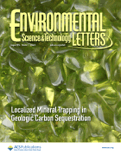
Environmental Science & Technology Letters
Unlocking innovative solutions to ecological challenges.Environmental Science & Technology Letters, published by the American Chemical Society, stands as a premier journal in the realm of environmental science and technology, focusing on pivotal studies that address pressing environmental challenges. With an impressive Q1 ranking in multiple categories including Ecology, Environmental Chemistry, and Pollution, this journal maintains a position of excellence within its field, achieving Scopus ranks that place it in the top percentile of Environmental Science disciplines. Although not open access, Environmental Science & Technology Letters offers vital insights and cutting-edge research that contribute significantly to the understanding and management of environmental issues. The journal’s objectives include disseminating ground-breaking findings and promoting discussions that lead to sustainable solutions. With convergence from 2013 to 2024, it continues to serve as an essential resource for researchers, professionals, and students committed to advancing knowledge and innovation in environmental science.

BULLETIN OF ENVIRONMENTAL CONTAMINATION AND TOXICOLOGY
Connecting science and policy for a sustainable future.BULLETIN OF ENVIRONMENTAL CONTAMINATION AND TOXICOLOGY, published by SPRINGER, is a pivotal journal in the fields of Environmental Science, Toxicology, and Public Health. With a strong history of dissemination since its inception in 1966, the journal predominantly focuses on the latest advances in understanding environmental contaminants and their toxicological effects on health and ecosystems. It currently holds a respectable Q2 ranking across multiple categories including Health, Toxicology and Mutagenesis, Medicine (miscellaneous), and Pollution, as per the 2023 metrics. While the journal is not Open Access, it provides an invaluable platform for researchers, professionals, and students seeking to contribute to and stay informed on critical issues regarding environmental hazards and their implications. With an engaged community of scholars and practitioners, this journal continues to be an essential resource for addressing the pressing challenges of environmental contamination and its health impacts, guiding future research and policy decisions.

Toxicology and Environmental Health Sciences
Pioneering Research for Sustainable Environmental PracticesToxicology and Environmental Health Sciences is a peer-reviewed journal published by the Korean Society for Environmental Risk Assessment & Health Science, dedicated to advancing the fields of toxicology and environmental health. With an ISSN of 2005-9752 and E-ISSN 2233-7784, this journal serves as a vital platform for researchers, professionals, and students seeking to explore the intricate relationships between environmental risks and public health. Operating from South Korea, it has a converged years span from 2009 to 2024, and currently holds a respectable Q3 quartile ranking in both Health, Toxicology and Mutagenesis and Toxicology. This positions the journal within a critical space for those invested in understanding and mitigating environmental health challenges. Although not an open-access journal, it continues to foster high-impact research, contributing to a better understanding of toxicological sciences and environmental health dynamics. Engage with the latest findings and discussions that shape this evolving field through the insightful articles published herein, reinforcing its importance as a resource for scholars and practitioners alike.